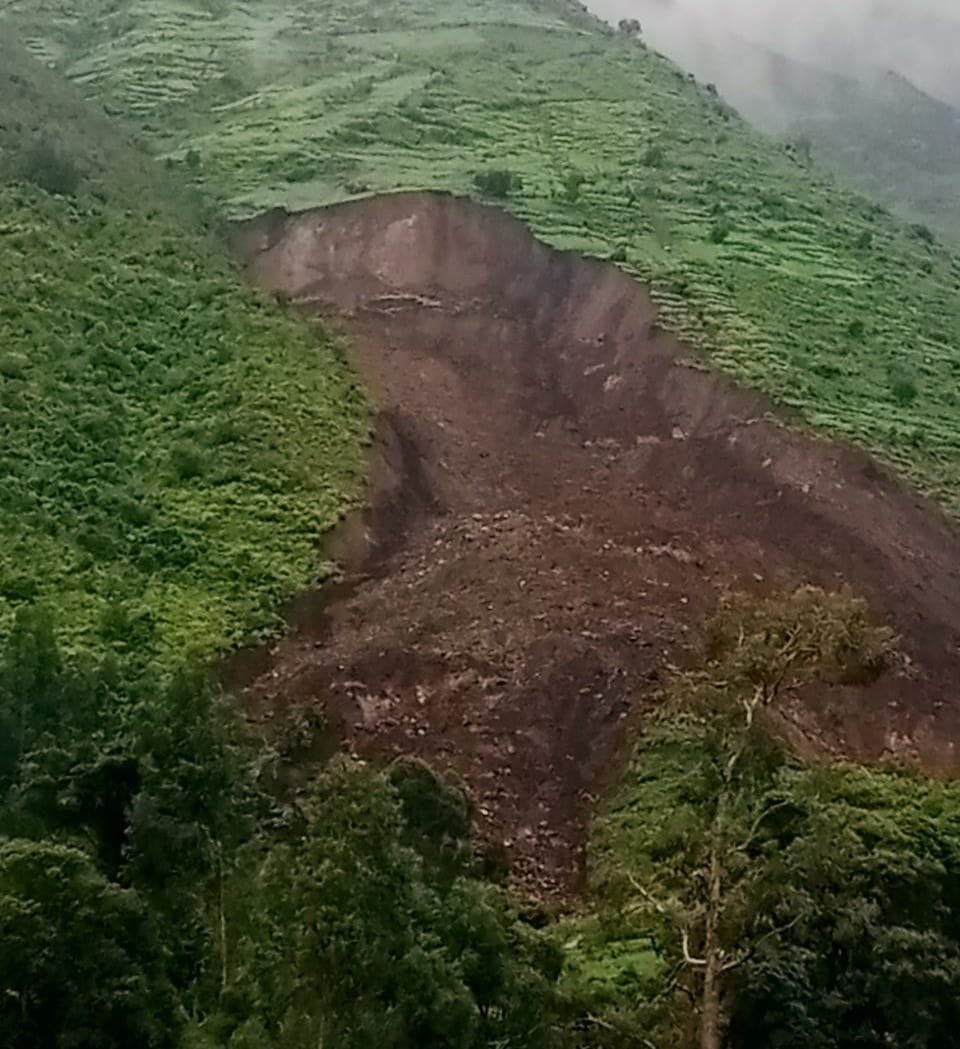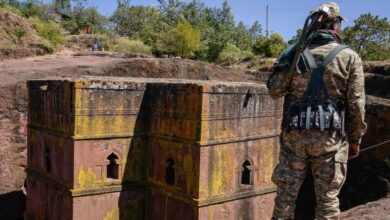Landslide Crisis Escalates in Northern Ethiopia: Historic Gondar Devastated, Urgent Global Support Needed

As the world grapples with the increasingly visible impacts of climate change, Ethiopia is facing a devastating landslide crisis that has brought the fragile state of its rural communities into sharp focus. The recent landslide in the Gonder zone of the Amhara region, which claimed the lives of 23 people and displaced thousands, is not an isolated incident but part of a troubling pattern exacerbated by extreme weather events. This tragedy, coupled with similar incidents across the country, underscores the urgent need for both immediate humanitarian assistance and long-term climate resilience strategies in Ethiopia.
In the Abina Kebele area of Telemt district, specifically around Nola, a catastrophic landslide has resulted in significant loss of life and destruction of homes and farmland. This region, already plagued by ongoing conflict and severe drought, has also suffered from widespread displacement due to war and identity-based attacks. The displaced population, predominantly women and children, was already highly vulnerable before this new disaster struck.
The humanitarian situation in Telemt is now expected to worsen dramatically. Many aid agencies have been unable to assist due to safety concerns, and the urgent need for emergency aid—both local and international—has never been more critical. Without immediate intervention, the situation is likely to lead to further loss of life and suffering.

A Season of Unrelenting Destruction
On August 24, 2024, heavy rains triggered a landslide in the Gonder zone, resulting in one of the deadliest disasters in recent memory. Over 2,700 people were displaced as the landslide destroyed 1,775 hectares of crops and damaged 48 homes across 11 rural districts. Local authorities quickly mobilized a task force to provide relief, but the scale of the disaster has left communities struggling to cope with the aftermath.
This calamity follows another landslide in the Telemt district , where 10 people lost their lives and six remain missing. The back-to-back disasters have created a sense of despair among the affected populations, with many questioning the adequacy of the government’s preparedness and response efforts.
The Ethiopian Meteorology Institute had warned of the heightened risk of landslides due to the unusually heavy rainfall forecasted for this season. However, the sheer intensity and frequency of these events have caught many off guard, highlighting the country’s vulnerability to climate-induced natural disasters.

A Broader Crisis Unfolding
The landslides in Gonder and Telemt are symptomatic of a broader crisis that is unfolding across Ethiopia. Last month, the southern Gofa zone was hit by consecutive landslides, resulting in nearly 260 deaths and displacing over 15,000 people. The widespread destruction has overwhelmed local capacities, prompting calls for international assistance to address the immediate humanitarian needs.
The impact of these disasters extends beyond the loss of life and displacement. The destruction of crops and homes has plunged thousands into deeper poverty, threatening food security and livelihoods in regions already plagued by drought and war. The cascading effects of these landslides are likely to be felt for years to come, as communities struggle to rebuild in the face of ongoing environmental and socio-economic challenges.
Climate Change and Ethiopia’s Vulnerability
Ethiopia’s susceptibility to natural disasters has long been a concern, but the current crisis underscores the intensifying risks posed by climate change. The country’s varied topography, characterized by highland plateaus and deep valleys, makes it particularly prone to landslides during the rainy season. As climate change accelerates, the frequency and severity of extreme weather events are expected to increase, exacerbating the vulnerability of Ethiopia‘s rural populations.
The Ethiopian government, along with international partners, has made efforts to address these challenges through disaster risk reduction and climate adaptation programs. However, the current crisis reveals significant gaps in these efforts, particularly in terms of early warning systems, infrastructure resilience, and community preparedness.
The Humanitarian and Political Implications
The landslide crisis in northern Ethiopia is not just a natural disaster but also a humanitarian and political challenge. The affected regions are among the most impoverished in the country, where years of underdevelopment and neglect have left communities ill-equipped to deal with such shocks. The displacement of thousands of people adds to the already substantial burden on Ethiopia’s humanitarian system, which is struggling to respond to multiple crises, including war and drought.
Moreover, the government’s response to the disaster, or lack thereof, could have profound implications for its legitimacy and authority, particularly in the context of the ongoing war between the federal government and Amhara resistance fighters, known as Fano. The war has already strained relations between the central government and the Amhara region, and the slow pace of relief efforts is exacerbating tensions. Local leaders have expressed frustration over the inadequate disaster response. This growing sense of disenchantment among the affected populations threatens to further erode the government’s standing in a region that is increasingly alienated and embattled.
A Call for Comprehensive Action
The ongoing landslide crisis in Ethiopia is a stark reminder of the urgent need for comprehensive action to address the country’s vulnerability to climate change. While immediate relief efforts are critical, they must be accompanied by long-term strategies to build resilience against future disasters. This includes investing in sustainable land management practices, strengthening early warning systems, and enhancing infrastructure to withstand extreme weather events.
Ethiopia’s landslide crisis underscores the urgent need for international support and global action to address climate-induced disasters. As the world warms, Ethiopia’s experience highlights the importance of preparedness, resilience, and international solidarity. The decisions made in the aftermath of this disaster will be crucial in shaping both immediate recovery and the country’s long-term resilience in an increasingly volatile climate.




